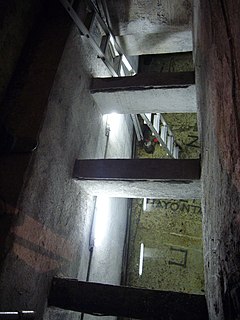

The Solarium Augusti or Horologium Augusti (both Latin for "Sundial of Augustus"; Italian: Orologio di Augusto) was a monument in the Campus Martius of ancient Rome constructed in 10 BCE under the Roman emperor Augustus. It included an Egyptian obelisk that had first been erected under the pharaoh Psamtik II[1] used in some fashion as a gnomon. Once believed to have been a massive sundial,[2] it is now more commonly understood to have been used with a meridian line used to track the solar year.[3] It served as a monument of Augustus having brought Egypt under Roman rule and was also connected with the Altar of Augustan Peace commemorating the Pax Romana established by his ending the numerous civil wars that ended the Roman Republic. The Solarium was destroyed at some point during the Middle Ages. Its recovered obelisk is now known as the Obelisk of Montecitorio.
- ^ Nasrallah, Laura Salah (2019). Archaeology and the Letters of Paul. Oxford University Press. p. 205. ISBN 978-0-19-969967-4.
- ^ Edmund Buchner (1976). "Solarium Augusti und Ara Pacis", Römische Mitteilungen 83: 319-375; Die Sonnenuhr des Augustus: Kaiser Augustus und die verlorene Republik (Berlin) 1988.
- ^ Peter Heslin, "Augustus, Domitian and the So-Called Horologium Augusti", The Journal of Roman Studies, 97 (2007: 1-20).